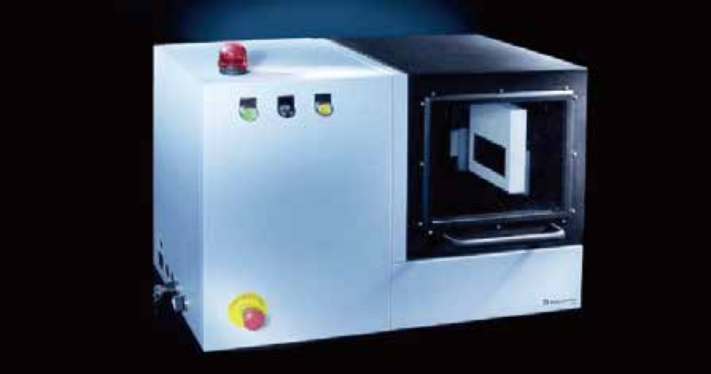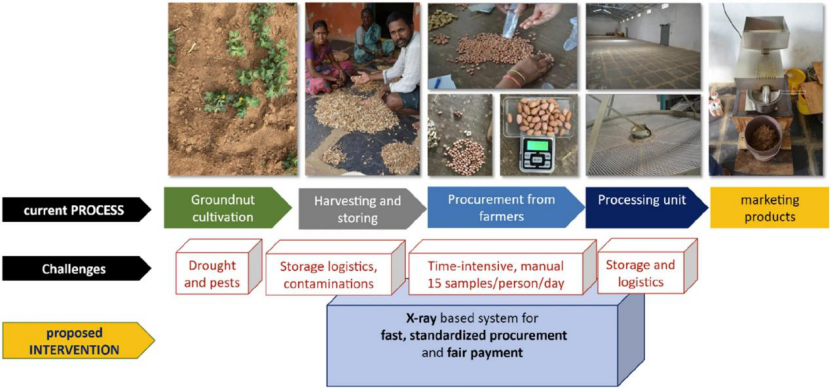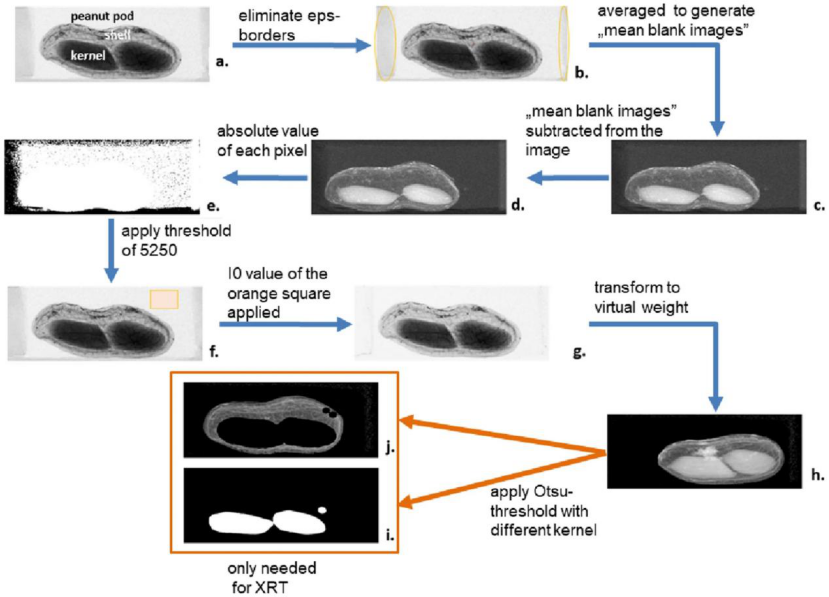品质至上,客户至上,您的满意就是我们的目标
技术文章
当前位置: 首页 > 技术文章
种子表型组学结构表型:X射线驱动花生性状估计:计算机视觉辅助农业系统转化
发表时间:2022-06-08 12:30:39点击:846
来源:北京博普特科技有限公司
分享:
台式CT断层扫描仪用于植物根系、茎干、果实、种子、叶片等分析,为研究提供数据和进行数据分析。

产品优势
无损监测系统
适用于不同植物种子、根系等
可快速有效扫描种子
易于操作使用
通过螺旋扫描实现所有体积层的各向分辨率
用户友好的控制软件、专有图像处理软件
根据特定检测任务精确调节系统,降低成本
也适合土壤研究
应用领域
台式CT断层扫描仪不仅运用于生物学,如植物根系、茎干、果实、种子、叶片等分析,也适用于地质学和考古学的大学或研究机构,也可用于对土壤结构如团粒结构等进行无损检测,分析土壤和根系关系以及结构等。
台式CT断层扫描仪提供一种快速可视的物体内外结构三维模式,在生物学、工业无损检测领域里变得越来越重要。
种子分析:玉米、小麦等
植物生长分析:叶片结构、根系结构等
土壤:土壤结构等
地理学和考古学:岩石样品等
X射线驱动花生性状估计:计算机视觉辅助农业系统转化
摘要
背景
在印度,原料花生是由采集商从小农农场以整荚的形式获得的,价格基于花生荚和果仁基本特性进行人工估计。这些原产品评估方法速度较慢,可能导致采购违规。采购延误加上缺乏储存设施,导致真菌污染,对许多地区的食品安全构成严重威胁。为了弥补这一差距,我们研究了X射线技术是否可以用于快速评估花生的关键品质,这些品质对价格评估很重要。
结果
我们使用计算机断层扫描(CT)系统生成了1752个花生荚2D X射线投影。在这些预测中,我们预测了核重和壳重,这是农产品价格的重要指标。测试了两种特征预测方法:(i)X射线图像变换(XRT)和(ii)经过训练的卷积神经网络(CNN)。这些方法的预测能力通过对不同花生荚果品种1的粒重和壳重的重量测量进行了测试。两种方法都用R2预测了核质量 > 0.93(XRT:R2 = 0.93和平均误差估计(MAE) = 0.17,CNN:R2 = 0.95和MAE = 0.14), 而CNN(R2)更准确地预测了外壳重量 = 0.91,MAE = 0.09)与XRT(R2)相比 = 0.78; MAE公司 = 0.08).
结论
我们的研究表明,基于X射线的系统是估算花生生产关键指标的相关技术选择(图1)。所获得的结果证明需要进一步研究,以适应现有的X射线系统,以实现快速、准确和客观的花生采购过程。快速准确地估计农产品价值是避免真菌污染造成的收获后损失的必要先决条件,同时允许向农民公平付款。此外,同样的技术还可以帮助作物改良计划,通过完全跳过豆荚脱壳过程,以高通量的方式选择和开发具有更高经济价值的花生品种。
本研究证明了该方法的技术可行性,是实现未来花生生产系统技术驱动转型的第一步。


X-ray driven peanut trait estimation: computer vision aided agri-system transformation
Martha Domhoefer, Debarati Chakraborty, Eva Hufnagel, Joelle Claußen, Norbert Wörlein, Marijn Voorhaar, Krithika Anbazhagan, Sunita Choudhary, Janila Pasupuleti, Rekha Baddam, Jana Kholova & Stefan Gerth
Abstract
Background
In India, raw peanuts are obtained by aggregators from smallholder farms in the form of whole pods and the price is based on a manual estimation of basic peanut pod and kernel characteristics. These methods of raw produce evaluation are slow and can result in procurement irregularities. The procurement delays combined with the lack of storage facilities lead to fungal contaminations and pose a serious threat to food safety in many regions. To address this gap, we investigated whether X-ray technology could be used for the rapid assessment of the key peanut qualities that are important for price estimation.
Results
We generated 1752 individual peanut pod 2D X-ray projections using a computed tomography (CT) system . Out of these projections we predicted the kernel weight and shell weight, which are important indicators of the produce price. Two methods for the feature prediction were tested: (i) X-ray image transformation (XRT) and (ii) a trained convolutional neural network (CNN). The prediction power of these methods was tested against the gravimetric measurements of kernel weight and shell weight in diverse peanut pod varieties1. Both methods predicted the kernel mass with R2 > 0.93 (XRT: R2 = 0.93 and mean error estimate (MAE) = 0.17, CNN: R2 = 0.95 and MAE = 0.14). While the shell weight was predicted more accurately by CNN (R2 = 0.91, MAE = 0.09) compared to XRT (R2 = 0.78; MAE = 0.08).
Conclusion
Our study demonstrated that the X-ray based system is a relevant technology option for the estimation of key peanut produce indicators (Figure 1). The obtained results justify further research to adapt the existing X-ray system for the rapid, accurate and objective peanut procurement process. Fast and accurate estimates of produce value are a necessary pre-requisite to avoid post-harvest losses due to fungal contamination and, at the same time, allow the fair payment to farmers. Additionally, the same technology could also assist crop improvement programs in selecting and developing peanut cultivars with enhanced economic value in a high-throughput manner by skipping the shelling of the pods completely.
This study demonstrated the technical feasibility of the approach and is a first step to realize a technology-driven peanut production system transformation of the future.